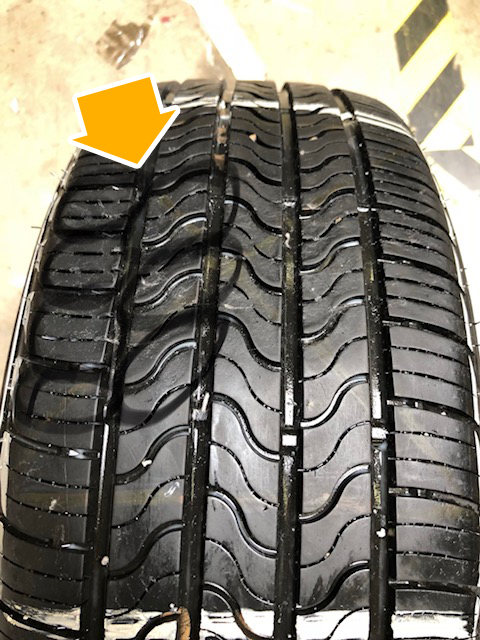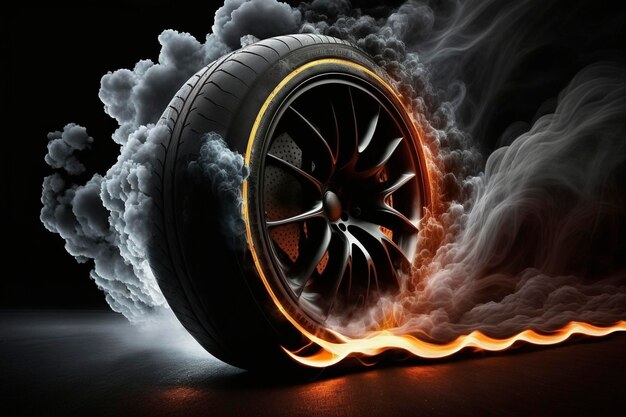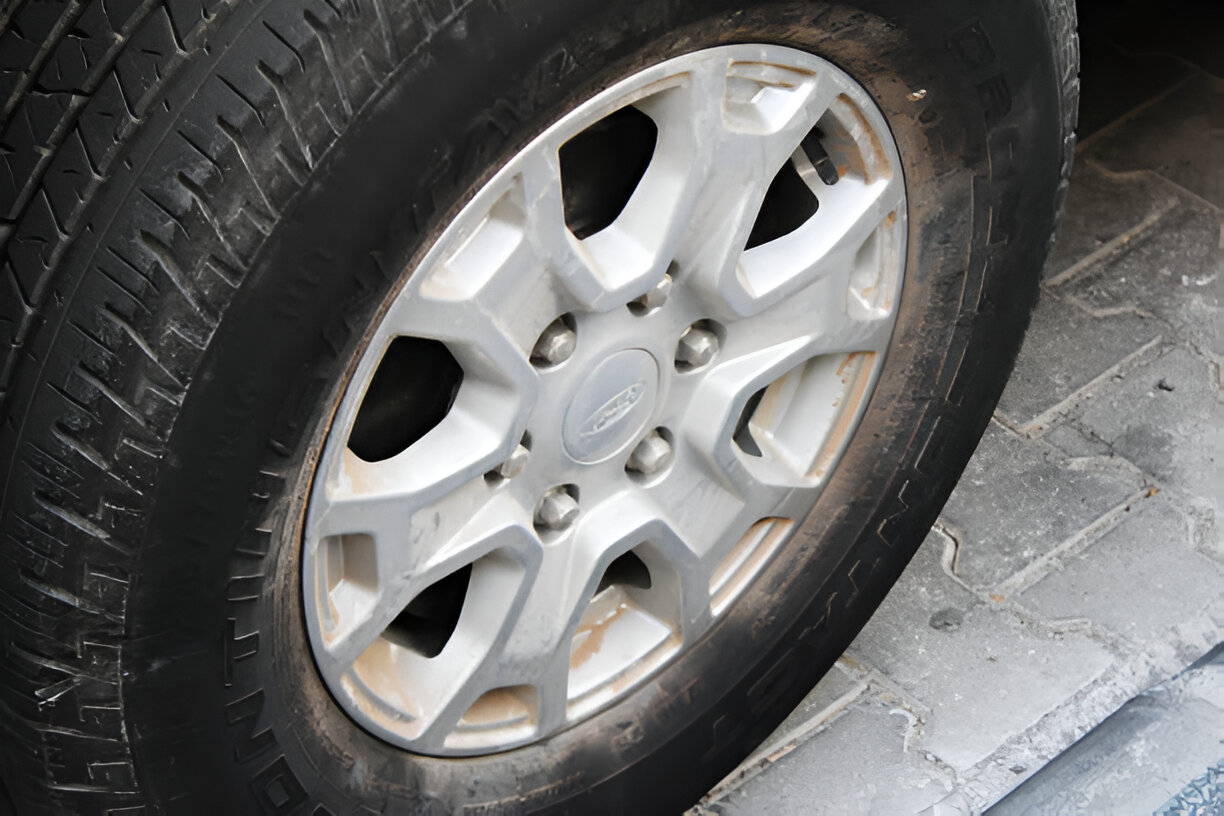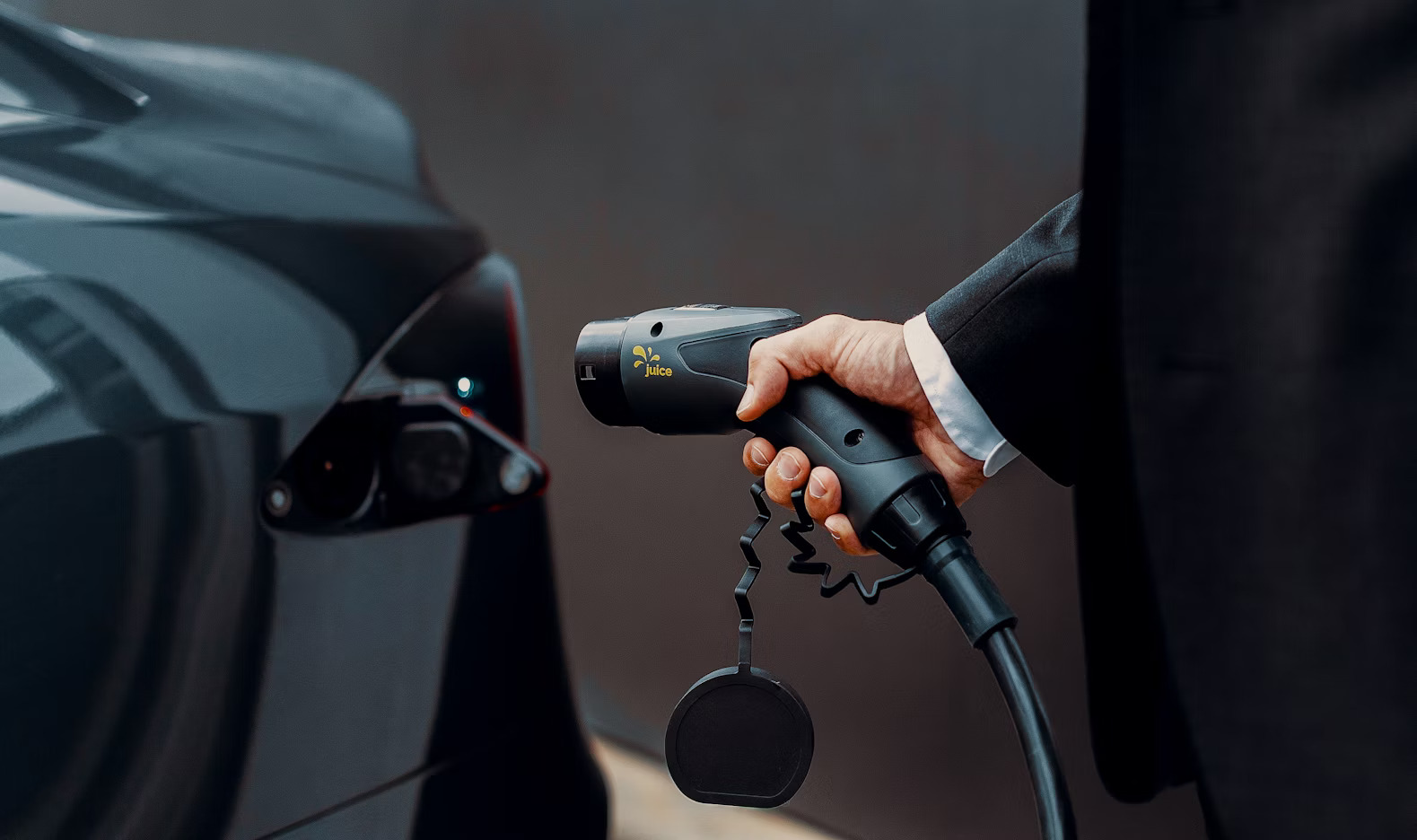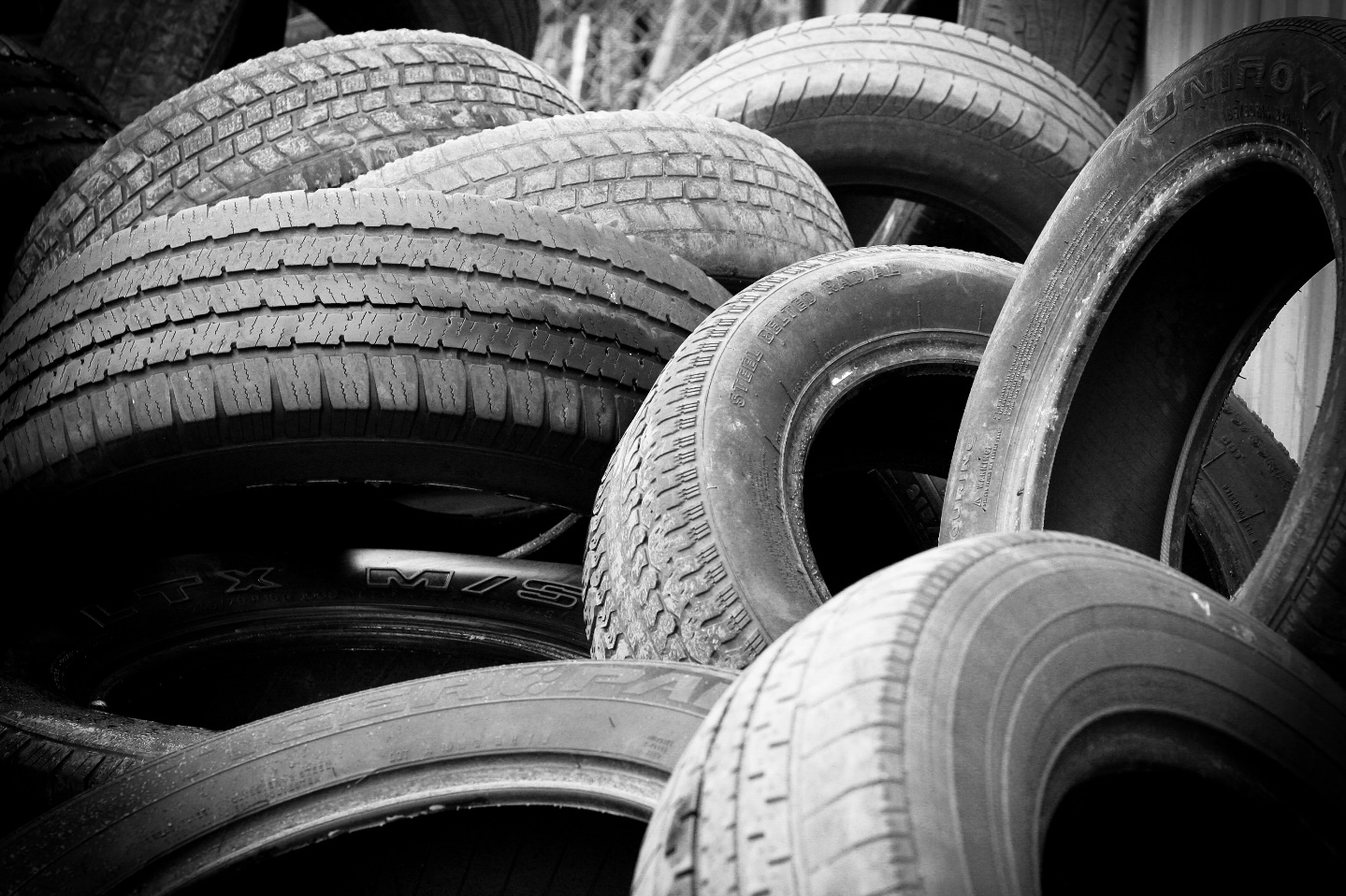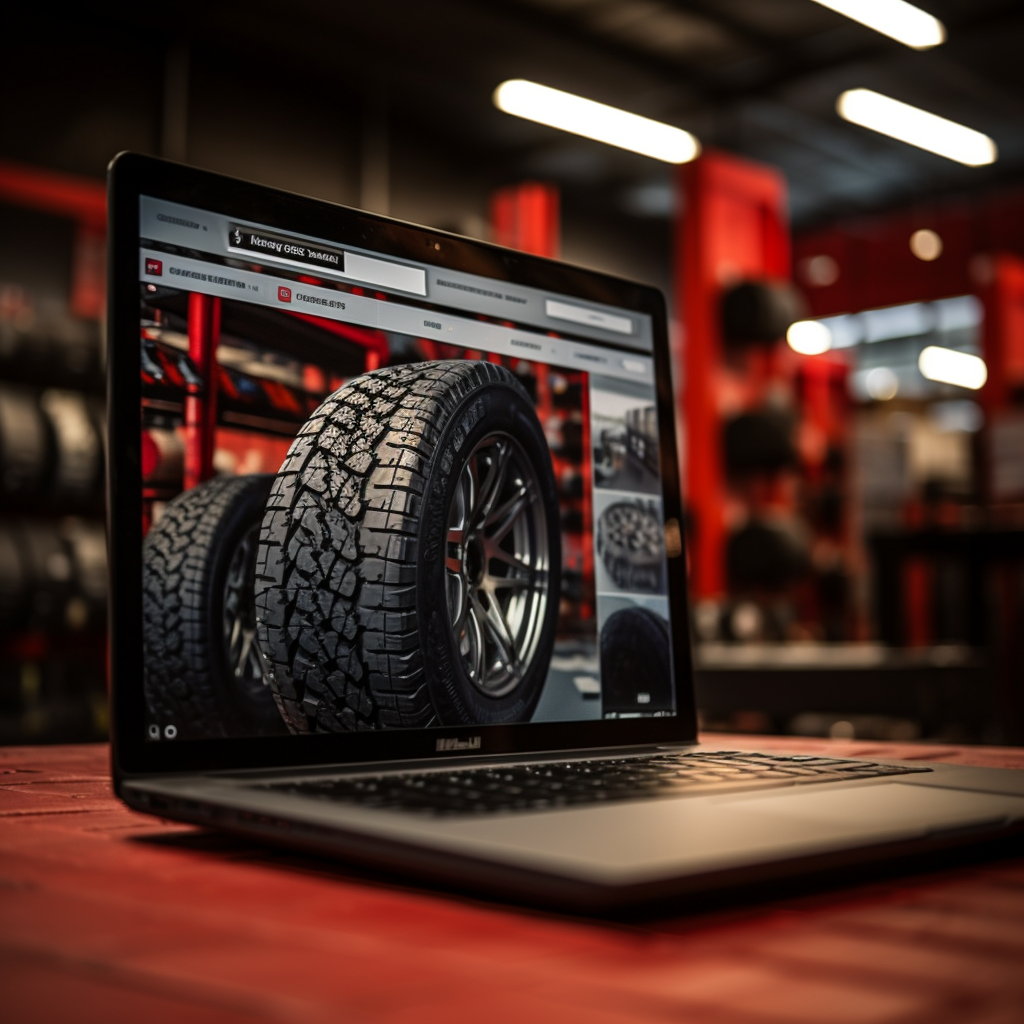Last Updated on August 3, 2025
Detecting Irregular Tire Wear Patterns for Optimal Performance
Irregular tire wear is a common issue that can significantly impact your vehicle’s performance and safety. Recognizing the signs of irregular tire wear is essential for maintaining optimal tire performance and extending its lifespan.
Regular tire maintenance is essential, and one key aspect is recognizing and addressing irregular tire wear patterns. Irregular Wear can lead to premature tire replacement, reduced handling, and decreased fuel economy.
In this guide, we’ll explore how to detect irregular tire wear, understand its causes, and take steps to ensure optimal tire performance and longevity.
What Is Irregular Tire Wear?
Irregular tire wear refers to the uneven or non-uniform wearing of your tire’s tread. Unlike normal Wear, where tires wear evenly across the tread, irregular wear patterns can develop due to various factors. Identifying these patterns early can prevent premature tire replacement and improve your vehicle’s handling and fuel efficiency.
Wear and Tear: How to Spot Irregular Tire Wear
Your tires play a critical role in your vehicle’s safety and performance. Proper tire maintenance is essential to ensure a smooth and safe ride. One aspect of tire care that often goes overlooked is irregular tire wear. Understanding how to spot irregular tire wear patterns can help you address issues promptly and extend your tires’ lifespan.
Common Causes of Irregular Tire Wear
Tire wear tells a story of a vehicle’s journey, but not all wear patterns signify smooth sailing. Irregular tire wear can indicate underlying issues, from simple maintenance oversights to more serious mechanical problems. Understanding these wear patterns can help diagnose vehicle concerns and ensure a safer, more efficient ride. Let’s delve into the typical culprits behind uneven tire wear.
- Improper Inflation: Underinflation or overinflation can cause the tires to wear unevenly. Check and maintain the recommended tire pressure regularly.
- Wheel Misalignment: Misaligned wheels can lead to irregular wear patterns, often seen as feathering or scalloping on the tire’s tread.
- Unbalanced Tires: Balancing issues can result in cupping or bald spots on the tire, affecting ride comfort.
- Suspension Problems: Worn-out or damaged suspension components can lead to irregular tire wear. Inspect your suspension system for issues.
- Driving Habits: Aggressive driving, excessive braking, and taking corners too sharply can contribute to uneven tire wear.
Types of Irregular Tire Wear
With every wheel rotation and every mile carried closer to your expected destination, your tires gradually wear down, and the tread becomes shallow—a natural result of driving. The best way to keep tires in tip-top shape is to rotate your tires regularly and methodically check the tread depth to recognize irregular tire wear. If you don’t know the signs of irregular tire wear and what to look for, the most common tire wear issues are below:
Center Tire Wear
Center Tire Wear results from a tire being overly inflated. The tire becomes domed, and the tire contacting the road is reduced to only the center treads. This center patch does all of the work while rolling down the road in addition to braking and accelerating and, therefore, wears unnecessarily sooner.
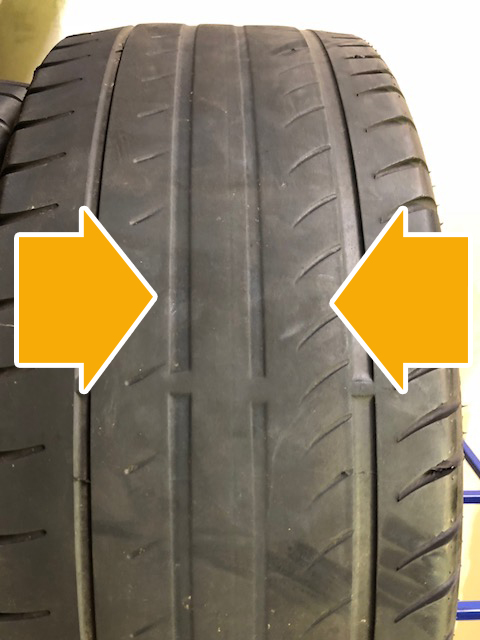 Handling is reduced due to the amount of tire contacting the road being less than the tire was designed for. Performance is further reduced as shoulder treads designed for traction, cornering, or other optimizations cannot reach the road to perform their duty. Check your vehicle owner’s manual for the proper tire pressure to ensure your tires are correctly inflated.
Handling is reduced due to the amount of tire contacting the road being less than the tire was designed for. Performance is further reduced as shoulder treads designed for traction, cornering, or other optimizations cannot reach the road to perform their duty. Check your vehicle owner’s manual for the proper tire pressure to ensure your tires are correctly inflated.
Side or Shoulder Tire Wear
The opposite of center tire wear, shoulder tire wear, is caused when your tires are under-inflated. The center tread will often be less worn, but the shoulders are more worn or smooth since they make more contact with the road. Again, handling and performance are impacted due to the tire not being in proper contact with the road and being able to perform as designed.
 You will also increase fuel consumption, as the car needs to work harder to pull the tire down the road rather than rolling efficiently. A word of advice: this type of Wear happens more frequently with cold temperatures—your tires can lose 1-2 lbs. of air pressure for every 10 degrees dropped—so take extra precautions to check your ideal tire pressure is consistently maintained.
You will also increase fuel consumption, as the car needs to work harder to pull the tire down the road rather than rolling efficiently. A word of advice: this type of Wear happens more frequently with cold temperatures—your tires can lose 1-2 lbs. of air pressure for every 10 degrees dropped—so take extra precautions to check your ideal tire pressure is consistently maintained.
Feathering
It may sound light and harmless, but Feathering signals something more serious: improper alignment. Named for its true-to-name characteristics, Feathering is challenging to spot with visual inspection but easy to feel when touched—tread will be rounded on the edges on one side but sharp on the other.
Small chunks can even be gouged out during Feathering and cause rapid Wear to your tires. A feather on the inside of the tread bar means excess toe-in, whereas a feather on the outside means excess toe-out. You can say goodbye to feathering with a prompt alignment.
Flat Spot Wear
Flat Spot Wear is caused by skidding, usually from braking too hard in an emergency. In this instance, the tire tread will be mostly intact and show regular Wear, save for one random smooth spot. If your tires show flat spot wear, consider checking your brakes, especially if you can’t remember making any hard stops, as it may be a sign of a foundation issue.
Flat spot wear can also be commonly seen on trailer tires if the braking connections are not correctly installed and trailer brakes lock upon braking, wearing a flat spot in the tire. Once your tires have a flat spot, there is no remedy.
Cupped Wear
Cupped Wear is not a simple fix, unfortunately. These inconsistent, scoop-like markings on your tread result from bouncing too much and, in turn, a worn shock absorber or faulty suspension system.
With ineffective shock absorbents, your vehicle will continue to bounce and gouge rubber chunks out of the tire, making for an unsafe ride. Return to riding confidently and balance by correcting the balance and replacing the wheels and tires if necessary.
Side Wear
Side Wear (also known as Camber Wear) is a symptom of a misaligned vehicle, explicitly affecting the inner tread or outer tread of the affected tire(s) and the ribs, whichever is worn down more. Check your springs and ball joints if a new alignment doesn’t solve the problem. Vehicles cambered intentionally will wear tires unevenly, are easily spotted upon inspection, and void most tire warranties.
Know the difference
Different tire wear can mean different things for your vehicle. If the issue warrants, spotting it allows you to discuss it with your tire shop on your next rotation or sooner. After all, tires are expensive, and we all want them to last as long as possible. We want to correct vehicle issues to stay safe on the road immediately.
Addressing Irregular Tire Wear
To address irregular tire wear:
- Maintain Proper Tire Pressure: Keep your tires inflated to the recommended levels.
- Regular Wheel Alignment: Schedule alignment checks and adjustments as needed.
- Rotate Tires: Rotate your tires regularly to ensure even wear.
- Check Suspension: Inspect and repair any damaged or worn suspension components.
- Drive Responsibly: Avoid aggressive driving habits that can accelerate tire wear.
Conclusion
Recognizing and addressing irregular tire wear is crucial for extending your tires’ lifespan and ensuring your vehicle’s safety and performance. By understanding the causes and types of irregular Wear, you can take proactive steps to maintain your tires and enjoy a smoother, safer ride. Don’t overlook tire maintenance; it’s an investment in your vehicle’s longevity.
Is your vehicle experiencing irregular tire wear?
Please don’t wait until it’s too late. Please browse our selection of high-quality tires at Tires Easy and keep your vehicle performing at its best. Your safety and comfort are our priorities.
Ready to Experience the Versatility of irregular tire wear?
Our customers can easily find the necessary tires at prices that suit their budget. Check out our blog and knowledge center for more useful tire-buying info at Tires-Easy.
FAQs
How do you check for uneven Wear on tires?
To check for uneven Wear on tires, perform a visual inspection by scrutinizing each tire’s tread. Look for irregular wear patterns, such as excessive Wear on one side, scalloped or cupped tread edges, or unusual patterns across the tire’s surface. Additionally, you can run your hand across the tire’s surface to feel for any irregularities in tread depth.
What is irregular Wear on tires?
Irregular Wear on tires refers to the uneven or abnormal wear patterns that develop on the tire’s tread. It can manifest as scalloping, cupping, Feathering, or one-sided Wear. Irregular Wear often indicates underlying issues with alignment, suspension, tire inflation, or driving habits, and it can lead to reduced tire performance, decreased safety, and the need for premature tire replacement.
How do you inspect tire wear?
Visually inspect each tire’s tread for irregular wear patterns. Check tread depth using a tread depth gauge or a penny test. Ensure that all tires have even wear across their surface. Examine the sidewalls for any signs of damage or bulges.
Inspect for proper tire inflation by using a tire pressure gauge. Consider consulting a professional mechanic or tire specialist for a thorough inspection if you notice any irregular wear or concerns about tire condition.
-
Automotive Specialist
-
Proofreader
-
Writer





